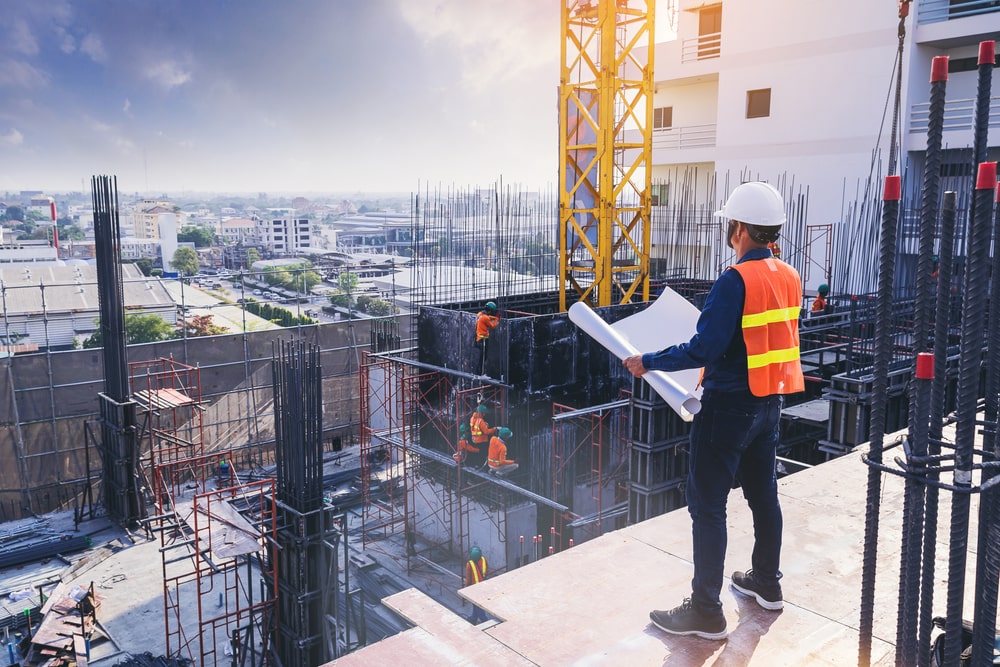Sector - Transport & Infrastructure
How technology can improve supply chain resilience in infrastructure project delivery

Major infrastructure projects rely on supply chains being resilient in the face of unexpected challenges. An Office for National Statistics (ONS) report revealed that around 10% of businesses with ten or more employees experienced disruptions to the global supply chain.
A disrupted supply chain can result in delays and increased costs, so strengthening it is crucial to delivery. Wincanton, a leading logistics partner that provides solutions for the infrastructure sector, offers expert insight into how incorporating emerging technology into processes can help add more resilience and how seamless they can make infrastructure projects.
Visibility of materials: real-time updates and visibility
Many components are involved in the infrastructure industry, especially when it comes to the logistics and availability of materials. Having real-time updates and visibility to track where they are and their estimated time of arrival (ETAs) can help keep projects on track for delivery, which prevents going over budget or delaying timelines.
This technology is one part of a wider digital transport solution for tracking and reporting to boost supply chain resilience. The concept involves using multiple devices within a single network for a greater sense of transparency throughout. Project managers and stakeholders alike can then monitor the locations and conditions of the materials to keep everything on track.
As a result, strategic planning can be done using data-driven decisions, as all the information is collected in one place and is easily accessible. Not only can this mean that reporting, reordering, or returning materials or equipment is made easier, but you can also ensure that the resources being ordered are of the quality you need.
Supplier coordination
Infrastructure projects often involve coordinating with many different suppliers to ensure that everything is delivered in a timely fashion. This means finding ways of fostering more collaboration between these suppliers can help ensure seamless procedures, and the advancements in technology and their accessibility can offer lots to the industry.
Collaborative software and cloud-based tech and platforms offer real-time connection and communication between businesses that can improve synchronicity. These systems also open possibilities through data sharing, so new plans or invoices can be sent, signed, and returned in good time, subsequently reducing delays from admin.
Impacts to the environment: tracking and management
One area that infrastructure as an industry must continue to focus on making improvements is within the tracking of emissions and waste created during projects.
Sustainability, consciousness, and accountability surrounding environmental practices are becoming more prevalent, particularly around how responsible they respond to it and the measures taken to improve and manage it.
Utilising technology can simplify measuring and tracking the emissions produced by a project while also enabling the retrieval of relevant data. By introducing sensors and systems to monitor carbon emissions, tech can manage emissions and waste more effectively. These tools can also track how the materials used are contributing to the overall carbon footprint in order to reduce the amount of waste generated. Not only does this help keep projects running on-time, on-budget and within regulatory frameworks, enhancing the reputation of the sector for project delivery.
Much like many other elements of the infrastructure industry, implementing technology into the supply chain is pertinent to improving its resilience. The benefits it provides offer infrastructure projects of all sizes more transparency and connectivity, so no matter how complex they are, the supply chain will be resilient enough to withstand their demands.
Submitted by Wincanton, a leading logistics partner that provides solutions for the infrastructure sector, has offered their expert insight into how incorporating emerging technology into processes can help add more resilience and how seamless they can make infrastructure projects.
If you would like to read more stories like this, then please click here
Related Articles
More Transport & Infrastructure News
- Inverness and Cromarty Firth Green Freeport
21 Oct 25
The Inverness and Cromarty Firth Green Freeport has secured a major step forward.
- Record number of infrastructure projects
8 Oct 25
The UK government has approved a record number of major infrastructure projects
- Government commits to record levels of funding for flood resilience
24 Sep 25
A total of £2.65 billion is being spent over two years on new flood defences.






